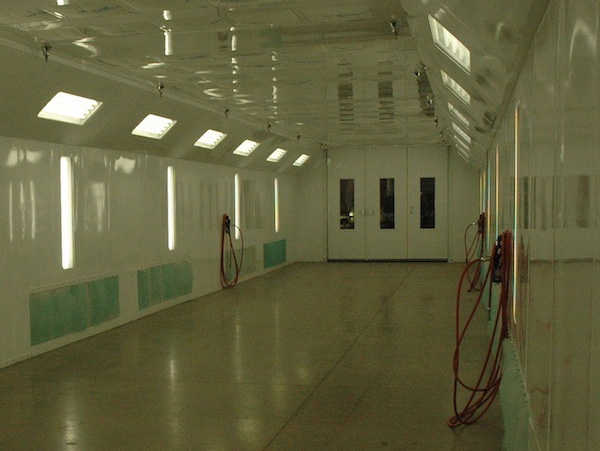Spray Painting
What Is Spray Painting?
 Spray painting is a highly efficient coating method used extensively in industrial manufacturing. At its core, it involves propelling a coating—such as paint, ink, or varnish—through the air using a device like a spray gun to evenly cover a surface. This technique is prized for its speed, consistency, and adaptability, especially when dealing with large areas or complex geometries.
Spray painting is a highly efficient coating method used extensively in industrial manufacturing. At its core, it involves propelling a coating—such as paint, ink, or varnish—through the air using a device like a spray gun to evenly cover a surface. This technique is prized for its speed, consistency, and adaptability, especially when dealing with large areas or complex geometries.
Industrial applications span multiple materials, including metal, wood, plastic, and fiberglass. Common spray painting methods include:
- Air-Atomized Spraying
- Airless Spraying
- Electrostatic Spraying
- High-Volume, Low-Pressure (HVLP) Systems
Health & Safety Hazards of Industrial Spray Painting
Exposure to Toxic Chemicals
Paints and solvents often contain volatile organic compounds (VOCs), isocyanates, and other toxic substances. These can cause both acute symptoms (headaches, dizziness, nausea) and chronic conditions, including:
- Lung cancer
- Neurological disorders
- Organ damage
- Painter’s syndrome (also known as Chronic solvent-induced encephalopathy)
Fire and Explosion Hazards
Many spray painting materials are highly flammable. In confined spaces or without proper ventilation, the risk of ignition increases exponentially.
Inhalation of Dust and Particles
Surface preparation tasks—like sanding—release airborne contaminants such as lead dust and crystalline silica, both of which are harmful when inhaled.
Physical Injuries
- Equipment-related injuries
- Slips and trips
- Heat exposure from surrounding machinery
Skin and Eye Exposure
Direct contact with paints or solvents can result in chemical burns, skin irritation, and eye damage if adequate protective measures are not taken.
Indoor Air Quality: A Critical Concern
Spray painting significantly affects indoor air quality, especially in closed industrial environments. Key concerns include:
- VOCs and airborne chemicals impair respiratory health and cognitive function.
- Overspray and fine particulates add to the pollutant load in the air.
- Poor air quality can lower productivity and exacerbate conditions like asthma and allergies.
Regulatory Compliance
Operating a spray painting facility means adhering to stringent safety and environmental laws:
OSHA Standards
- Permissible exposure limits (PELs)
- Required ventilation systems
- Fire safety practices
- PPE usage and hazard communication
Labeling & Documentation
Employers must maintain and provide up-to-date Safety Data Sheets (SDS) and ensure proper chemical labeling at all times.
Booth and Code Compliance
Spray booths must conform to fire and building codes, such as:
- NFPA 33
- International Fire Code
- Local Authority Having Jurisdiction (AHJ) approvals
Waste Management
Paint waste, solvents, and used filters must be disposed of in accordance with hazardous waste regulations to avoid environmental damage and legal penalties.
What You Can Do
To mitigate the impacts of spray painting on air quality within a manufacturing facility, various measures can be implemented:
- Low-VOC and No-VOC Paints: Modern formulations dramatically reduce hazardous emissions without compromising performance.
- Advanced Ventilation & Exhaust Systems: Well-engineered spray booths incorporate multi-stage filtration and airflow control that exceed regulatory standards.
- Continuous Air Quality Monitoring: Ongoing VOC testing, airflow tracking, and personal exposure assessments ensure compliance and protect long-term worker health.
- Enclosed Paint Booths: Retractable or enclosed spray booths with positive or negative pressure anterooms and integrated filtration help isolate contaminants and recirculate clean air.
- PPE and Worker Training: Mandatory use of respirators, chemical-resistant clothing, and protective eyewear combined with comprehensive training reduces exposure risks significantly.
- Routine Maintenance and Clean-Up: Regularly replacing filters, maintaining equipment, and enforcing strict housekeeping schedules prevent the buildup and re-emission of dangerous substances.
By implementing these measures, manufacturers can help protect the health and well-being of their workers and maintain a cleaner and safer air quality within the facility.
Clean Air Solutions for Spray Painting

RTT EZ Classic Crossdraft Paint Booths
Premium Performance. Proven Durability. Smart Design.
Reliable, efficient crossdraft spray booths designed for automotive shops seeking easy installation, great airflow, and consistent results.
Product Details
RTT EZ Pit Downdraft Paint Boooths
Automotive Finishing Starting from the Ground Up
Premium downdraft spray booths with pit design for unmatched airflow control and finish quality—built for high-volume, professional shops.
Product Details
RTT EZ Side Downdraft Paint Booths
Flawless Finishing with Side Downdraft Efficiency
Delivers even airflow and top-tier finishes with side downdraft design—ideal for shops needing performance without floor excavation.
Product Details